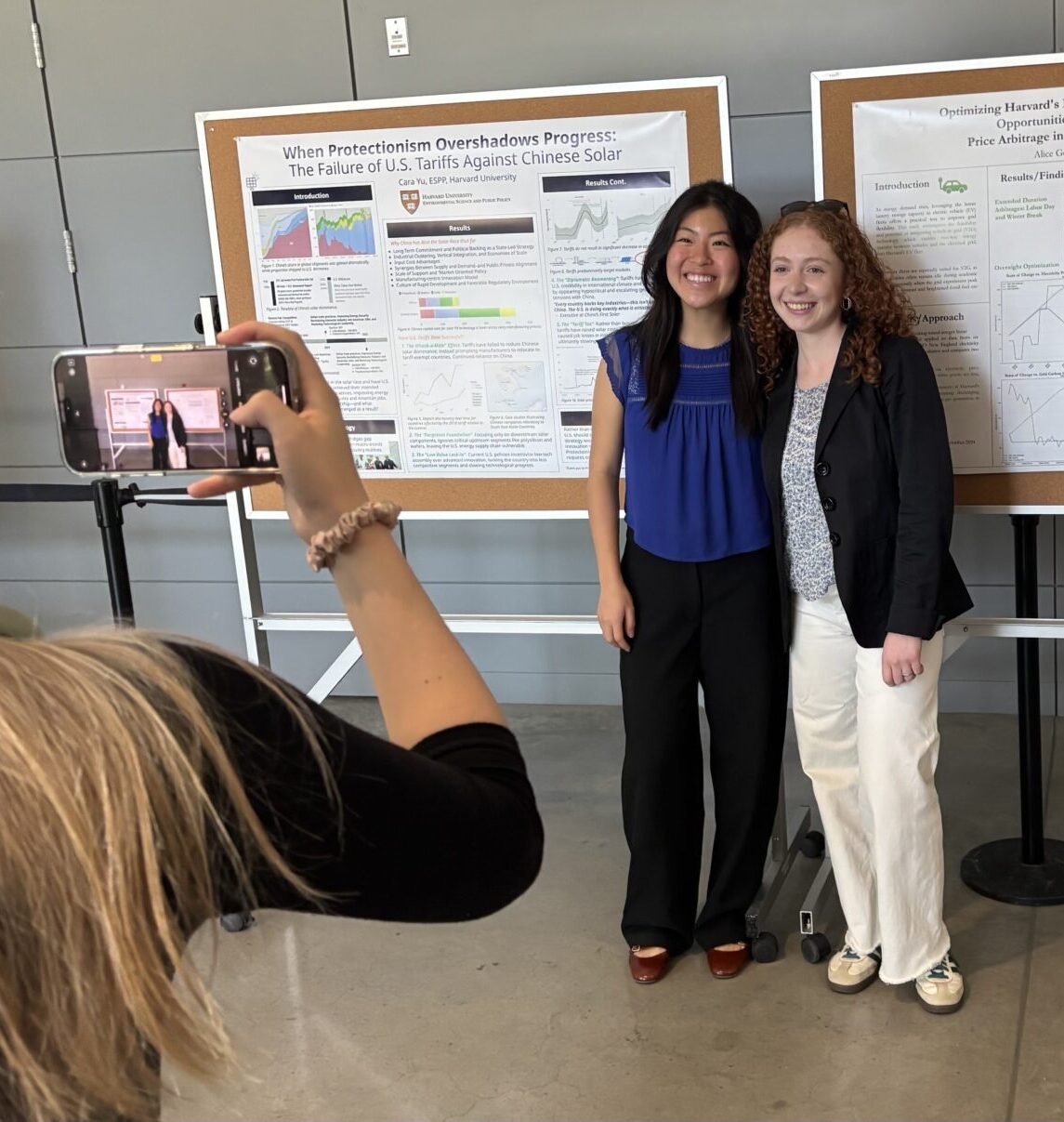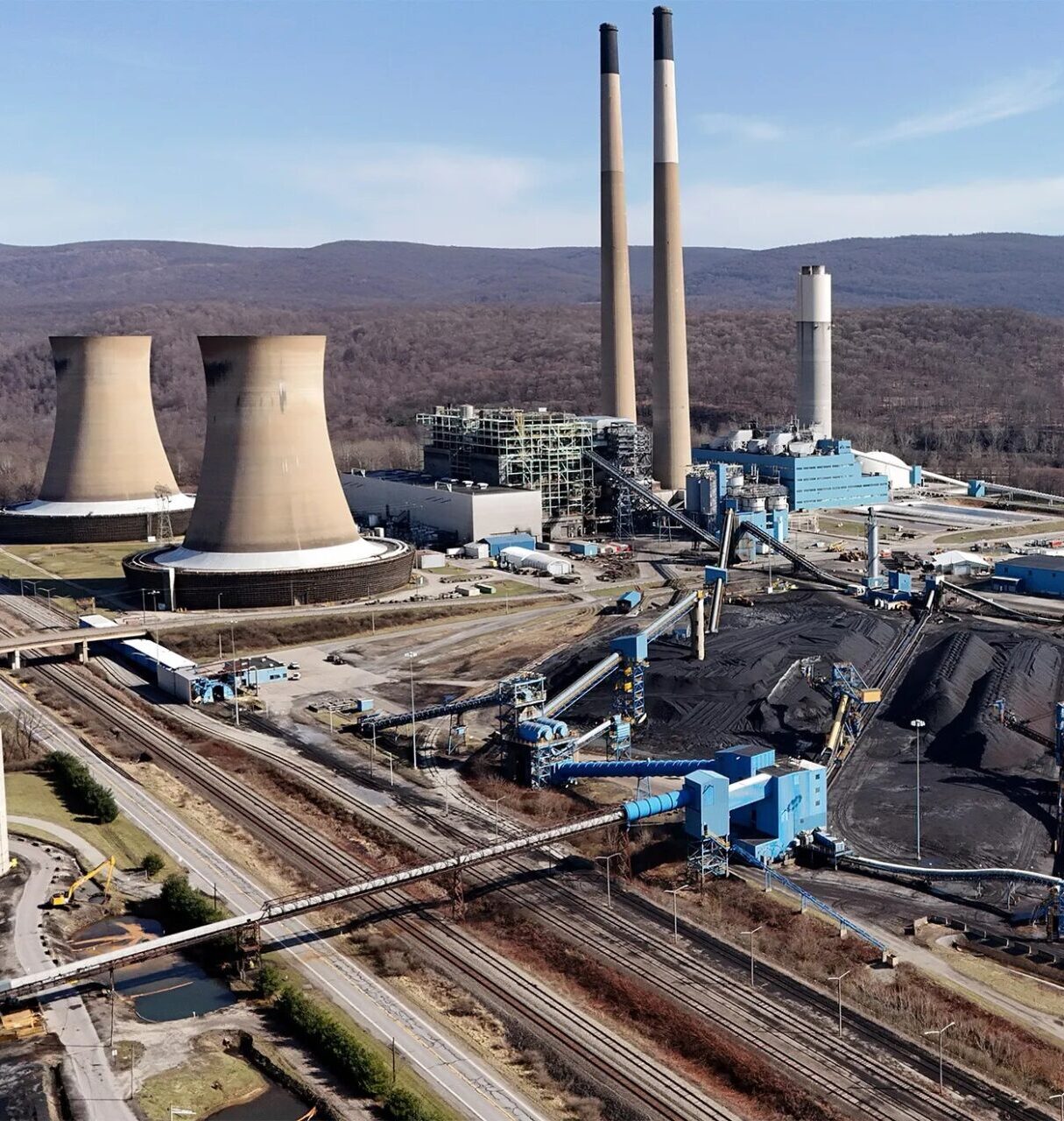Cooling Off: Low-Carbon Alternative to AC
The career paths of a materials scientist and an architect are unlikely to cross. Yet in Joanna Aizenberg’s Biomineralization and Biomimetics Lab, at the Harvard John A. Paulson School of Engineering and Applied Sciences, the expertise of both materials science and architecture are combined to produce energy efficiency technologies to reduce greenhouse gas emissions.
Jack Alvarenga, a materials scientist in the Aizenberg lab, is collaborating with Jonathan Grinham, Assistant Professor in Architecture, and Martin Bechthold, Kumagai Professor of Architectural Technology, at the Graduate School of Design, on more efficient ways to heat and cool buildings. The work represents the Aizenberg Lab’s research in dynamic and adaptive architecture that can “respond reversibly to changes in their environment,” almost like a living organism.
“One of our research focus areas is thermal comfort, so using unique materials and design elements to yield more environmentally friendly thermal and climate control,” Alvarenga explained.

The Lab has developed an evaporative cooling system, called “cSNAP,” that cools incoming hot air with water circulating within the unit without adding humidity to the building, which is a traditional flaw of evaporative cooling that makes it difficult to implement in humid climates, such as Boston’s.
cSNAP has the potential to replace conventional vapor compression systems, which are highly energy intensive and require refrigerant chemicals that can be up to 10,000 times more potent than carbon dioxide in their warming effect. The system is a combination of the Aizenberg Lab’s work with hydrophobic surfaces and the Graduate School of Design’s historical work with ceramics. The water can then absorb heat while it evaporates, but this new evaporative cooling system with its protective hydrophobic layer will ensure that water vapor is kept out of the cool air.
The researchers tested their new system in July 2022 at House Zero, which is used to test energy-efficient building technologies on the Harvard campus. Their initial results proved that they could achieve the cooling they were looking for with significant energy reductions and even water use reductions.
Conventional air-conditioning units spend slightly more energy, and thus generate more emissions, in removing moisture from the air than in reducing the air’s temperature, according to a recent report from NREL and Xerox PARC.
“You don’t actually think about that aspect of things when setting the thermostat because you only see the temperature component, but the fact is that the temperature and humidity are very much intertwined,” Alvarenga said. “In a lot of cases, just being able to reduce the humidity actually creates a comfortable living area without having to rely on the refrigerants required to lower the temperature.”

The Aizenberg Lab is also trying to decouple cooling air from dehumidifying air, especially when removing humidity might be enough to make the air comfortable for people to live in. The Lab has developed a thin polymer membrane-based system that is both water permeable and water selective, allowing it to transmit several orders of magnitude more molecules of water for every molecule of nitrogen or oxygen that slips through. This membrane would then be coupled with a vacuum pump to create a force that accelerates the diffusion and helps filter out the water vapor from the air.
This membrane technology, called “DryScreen” offers a more energy efficient way to cool buildings, especially in humid climates. The prototype was funded by the US Department of Energy, and an early version of the system was installed in Miami and yielded promising results over the course of a few days.
“When we think of cooling in buildings, we think of a set point that we’re cooling to,” Grinham said. “Removing humidity means we can set that temperature higher. This tech shows that with less humid air, we can keep the body comfortable at higher temperatures.”
Both Alvarenga and Grinham cite their cross-School collaboration as a model for successful research that yields a real-world application.
“My general interest has always been being able to translate the science out into the real world,” Alvarenga said.
Aizenberg’s affiliation with the Wyss Institute kept an interest in adaptive architecture alive, and support from faculty like Bechthold and programs like the Harvard Climate Change Solutions Fund have made these projects possible.
“Translational research is the key to this work,” Grinham said. “We’re really interested in asking, how do we take these problems that we’re very aware of at the Graduate School of Design and look at the solutions that are coming out of the Aizenberg Lab?”
Alvarenga and Grinham are planning further testing of cSNAP and DryScreen, with the hope of scaling up, developing, and manufacturing these units for potential future commercialization.
Laura Espinoza is a senior at Harvard College concentrating in Economics with a secondary in Environmental Science and Public Policy, and an intern with the Salata Institute for Climate and Sustainability.








